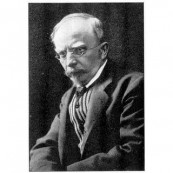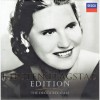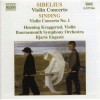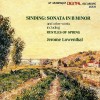Biography
Christian August Sinding (11 January 1856 – 3 December 1941) was a Norwegian composer. He is known for his lyrical works for piano, such as Frühlingsrauschen (Rustle of Spring, 1896). He was often compared to Edvard Grieg and regarded as his successor
He was born in Kongsberg as a son of mine superintendent Matthias Wilhelm Sinding (1811–1860) and Cecilie Marie Mejdell (1817–86). He was a brother of the painter Otto Sinding and the sculptor Stephan Sinding.[1] He was a nephew of Nicolai Mejdell (1822–1899) and Thorvald Mejdell (1824–1908),[2] and through the former a first cousin of Glør Thorvald Mejdell, who married Christian's sister Thora Cathrine Sinding.[3] Christian Sinding was also a first cousin of Alfred Sinding-Larsen and the three siblings Ernst Anton Henrik Sinding, Elisabeth Sinding and Gustav Adolf Sinding. Through his brother Otto he was the uncle of painter Sigmund Sinding.[1][2]
In November 1898 he married actress Augusta Gade, née Smith-Petersen (1858–1936). She had been married to Fredrik Georg Gade for seventeen years, and was a daughter of Morten Smith-Petersen and maternal granddaughter of Jacob von der Lippe
He studied music first in Christiania before going to Germany, where he studied at the conservatory in Leipzig under Salomon Jadassohn and fell under the musical influences of Wagner and Liszt. He lived in Germany for much of his life, but received regular grants from the Norwegian government. In 1920–21 he went to the United States of America to teach composition for a season at the Eastman School of Music in Rochester, New York. In 1924 he was given Henrik Wergeland's former home, "Grotten" ("The Grotto"), as an honorary residence. He died in Oslo.
Sinding's publishers required from him piano and chamber music, which has broader sales than the symphonic works he preferred. His own instrument was the violin. The large number of short, lyrical piano pieces and songs that Sinding wrote has led to many seeing him as the heir to his fellow countryman, Edvard Grieg, not so much in musical style but as a Norwegian composer with an international reputation. After his first piano sonata was premiered, a critic complained that it was "too Norwegian". Though Sinding is said to have replied that the next one would be even more so, specifically Norwegian folk-elements are not prominent in his richly contrapuntal post-Wagnerian orchestral style.
Sinding is best remembered today for one of his piano works, Frühlingsrauschen (Rustle of Spring, 1896). Among his other works are four symphonies,[4] three violin concertos, a piano concerto,[5] chamber music, songs and choral works to Norwegian texts, and an opera, Der Heilige Berg (The Holy Mountain, 1914).
Sinding was appointed a Commander of the Order of Vasa. In 1916, he became a Commander, and in 1938, received the Grand Cross, of the Order of St. Olav.
Eight weeks before his death in 1941, Sinding joined the Norwegian Nazi party, Nasjonal Samling. Because it was official practice for the postwar national broadcasting monopoly to boycott people seen as Nazi sympathisers, Sinding's reputation in Norway is now relatively obscure. The circumstances surrounding the composer's membership continue to raise controversy.[6] Sinding had made several remarks against the occupation,[7] had fought for the rights of Jewish musicians during the early 1930s, was a close friend of Nordahl Grieg, and had suffered from severe senile dementia since the late 1930s.[8] The Nazis had strong motivation to recruit Sinding, as he was tremendously popular before the war – particularly in Norway and Germany, and the party paid his fees.









